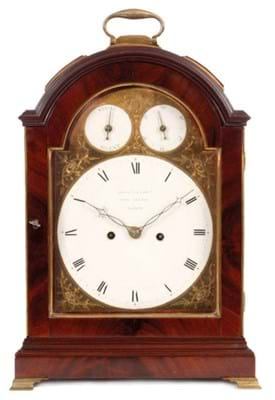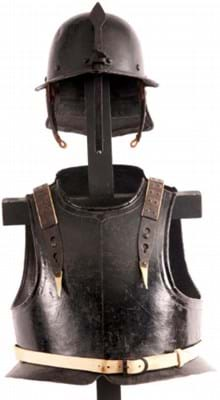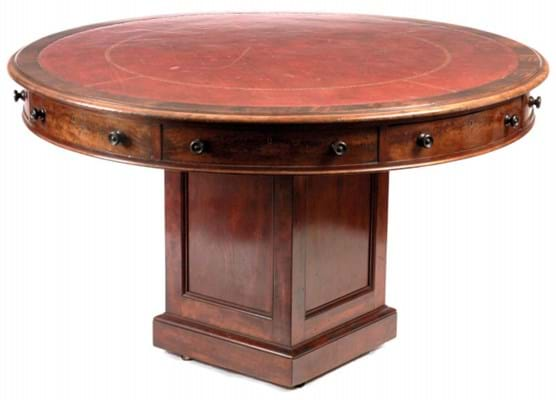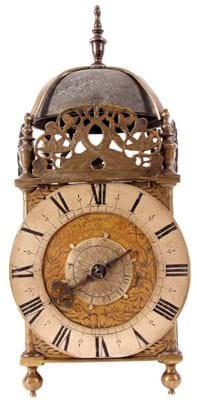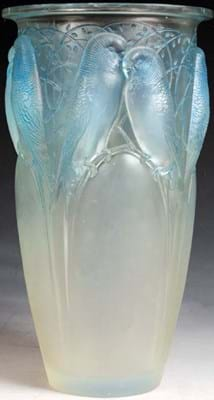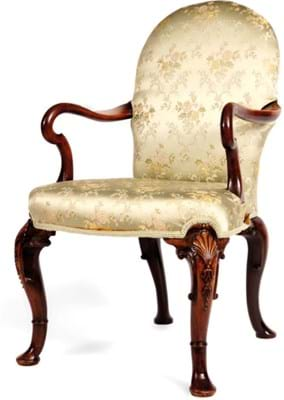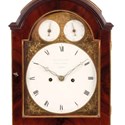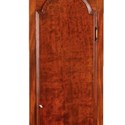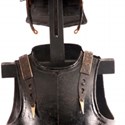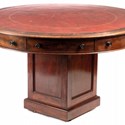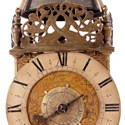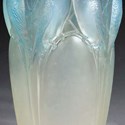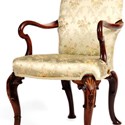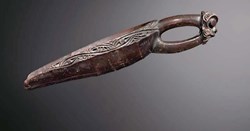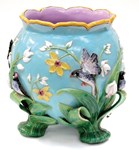ACCLAIMED new writers suffer it when their second novel is panned, rock groups experience it when their second album fails to chart… shooting-star syndrome can also strike when fledgling auctioneers hold their second sale.
Happily for North Yorkshire dealers-turned-auctioneers Michael Scott and Paul Hodson, the second outing for Hutchinson Scott (20% buyer’s premium) at Bedale Hall on January 27-28 was 50% up on the £300,000 debut in September (ATG No 2262).
Another traditional ‘country house’ catalogue covering most collecting bases, it totalled £450,000 with some 70% of the 770 lots getting away.
More encouragingly, two of the market’s depressed areas – longcase clocks and English furniture – were the backbone of the success.
“Our clock section was the strongest with a good selection of privately sourced lots totalling £140,000, ” said Scott. He himself was a clocks specialist before he, along with Hodson, revived the auction house which had been in abeyance since his father, Philip, retired in 2013.
Top clock was a late 18th century eight-day longcase clock by noted London maker Thomas Mudge.
In an 8ft (2.44m) tall, figured mahogany case with break-arch hood and ball and flambé finial, it featured a 13in (33cm) arched brass dial with revolving ball moon and lunar calendar. Pitched at a confident £20,000-30,000, it sold to a private buyer at £27,000.
“They say that longcase clocks don’t sell but this was a superb example which shows that if an item is the best you can buy then they are still in high demand, ” said Scott.
Another private buy at £11,500 was a William IV eight-day regulator in a 6ft 7in (2m) tall, figured mahogany case in the Regency Egyptian style.
Stamped to the front place J[ames] Condliff Liverpool, it also included a brass dust cover engraved Jno B Mc Fadden A.D.1832 (presumably for whom it was made).
The earliest clock on offer was a Charles II, 15¼in (39cm) high brass rope-driven lantern clock signed John Ebsworth at Ye Crossed Keys in Lothbury Londini Fecita which sold at a mid-estimate £7200. Lothbury in the City of London included a number of metalworkers and clockmakers before the area (so-named because of the loathsome noise emanating from its many manufacturers) was razed by the Great Fire.
“It was a superb lot with a rare half-hour striking mechanism, ” said Scott. “Originally it had been driven by a balance wheel escapement which meant it was an early example for Ebsworth. The private buyer told us later that he has got it in pieces to service and restore it.”
Two 19th century horology stars were a Regency flame mahogany and brass-bound bracket clock signed Ellicott Taylor and Co. London and a porcelain panelled carriage clock by Drocourt. The bracket clock, 18½in (47cm) high with the handle up, had an arched 8in (20cm) florally engraved gilded brass dial. With a fine-quality, eight-day twin-fusee movement, anchor escapement and bell strike, it went to an aboveestimate £13,000 private bid.
The late 19th century Drocourt clock, 6¾in (17cm) tall with engraved brass gorge case and gilt panels painted with romantic classical scenes, had an eight-day spring-driven movement with a repeater. The target of two collectors, it went comfortably above estimate at £7000.
Six-figure furniture
“Our second best-selling section was the furniture which totalled £100,000, ” said Scott. “There is definitely a high demand for the quality goods. A mixture of trade and privates were buying.”
Mid-market English material from across the centuries thrived.
A Queen Anne walnut armchair with arched back, bowed seat and shaped crook arms went to a private bidder above estimate at £7000.
Even with the addition of premium and VAT this was less than the £10,000 it made at Sotheby’s in 1993, but today looks a good price.
A George III mahogany window seat measuring 3ft 4in (1.01m) wide tripled expectations at £4200; a mahogany campaign partners’ desk, attractively small at 3ft 7in wide x 2ft 9in deep (1.09m x 84cm) went above-estimate at £3200, while a George IV flame veneered mahogany rent table in the manner of Gillows with a 4ft 6in (1.37m) diameter revolving top fitted with frieze drawers doubled hopes at £7000.
The sale got off to a fine start among the opening glass section. A c.1930. 9½in (24cm) tall Ceylan vase, with the wheel-engraved signature R. Lalique France, was contested by two collectors to a double-estimate £5000.
Among the arms and armour a Cromwellian harquebusier’s suit of armour, helmet, breastplate and backplate took a mid-estimate £4000, while a late 18th century flintlock Baker rifle by Henry Nock sold at a mid-estimate £5000.
Pairs of pistols continue to shine at auction and here a cased pair of engraved double-barrelled percussion pistols with chequered walnut butts stamped James Purdey, Oxford Street, London took a top estimate £6000.
From a number of cold-painted bronzes, the top-seller was a 11½in (29cm) tall sculpture of a stag by Franz Bergman with the foundry stamp and number, 3693, and the trademark Geschultz stamp.
Estimated at £1500-2500, it sold to a European dealer at £3000.

